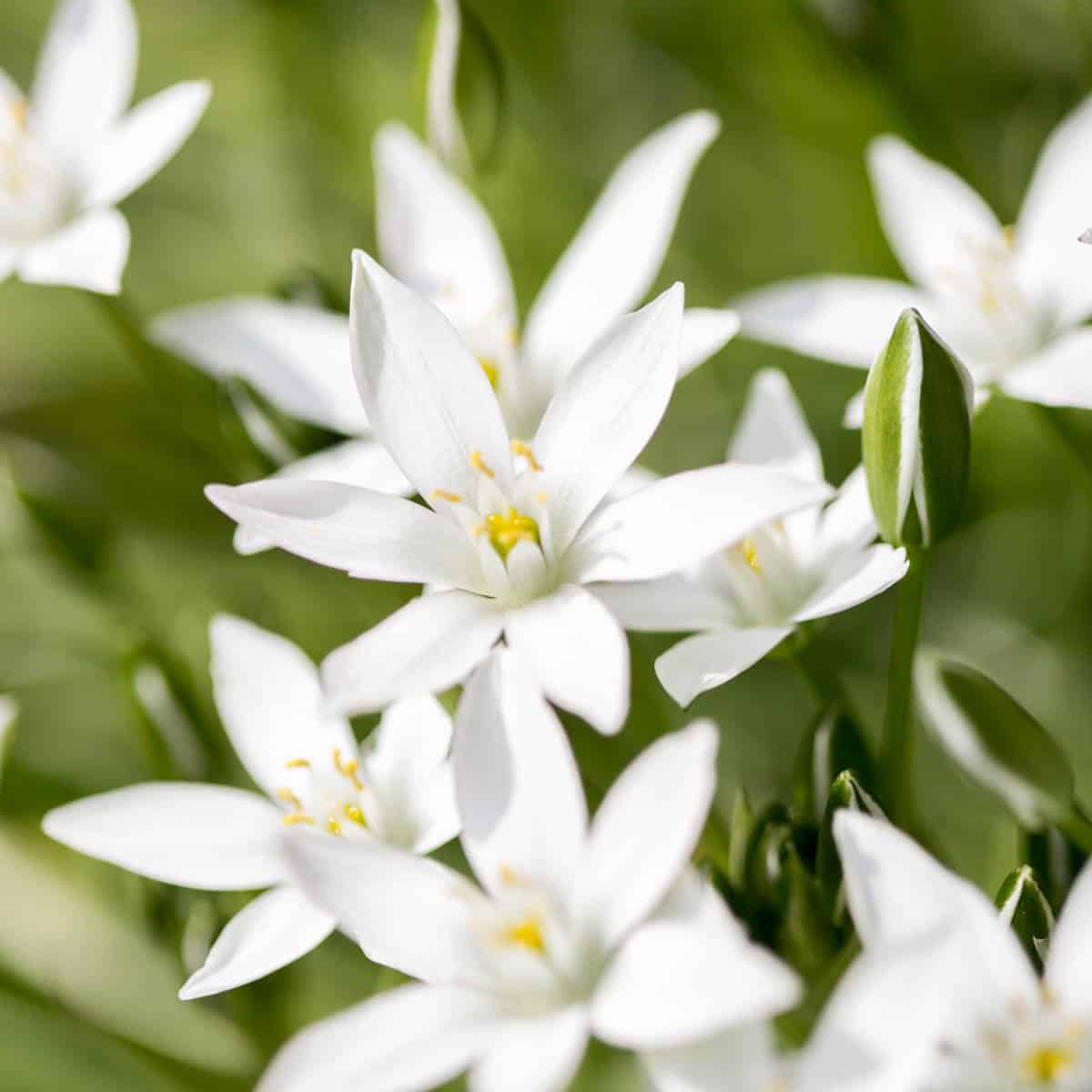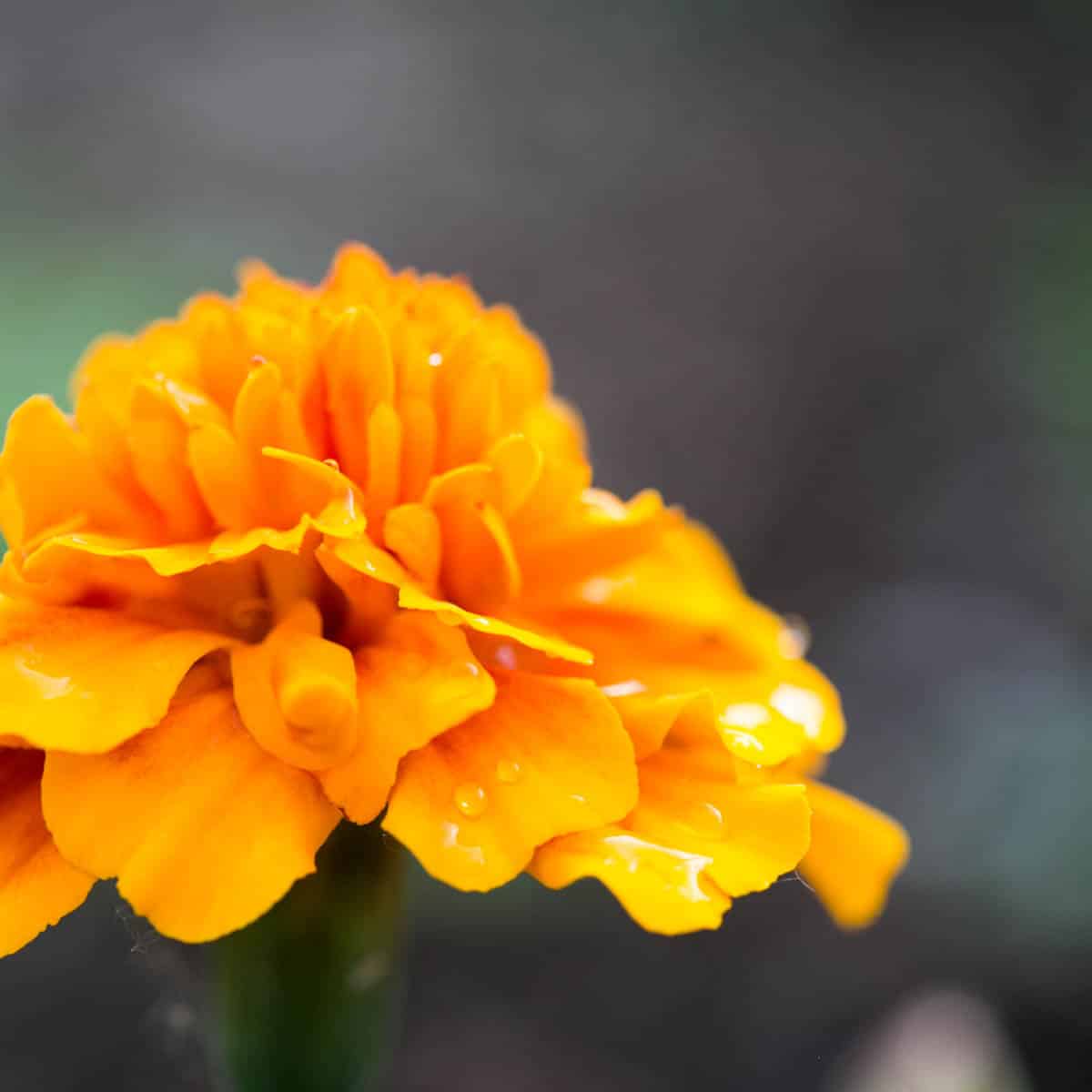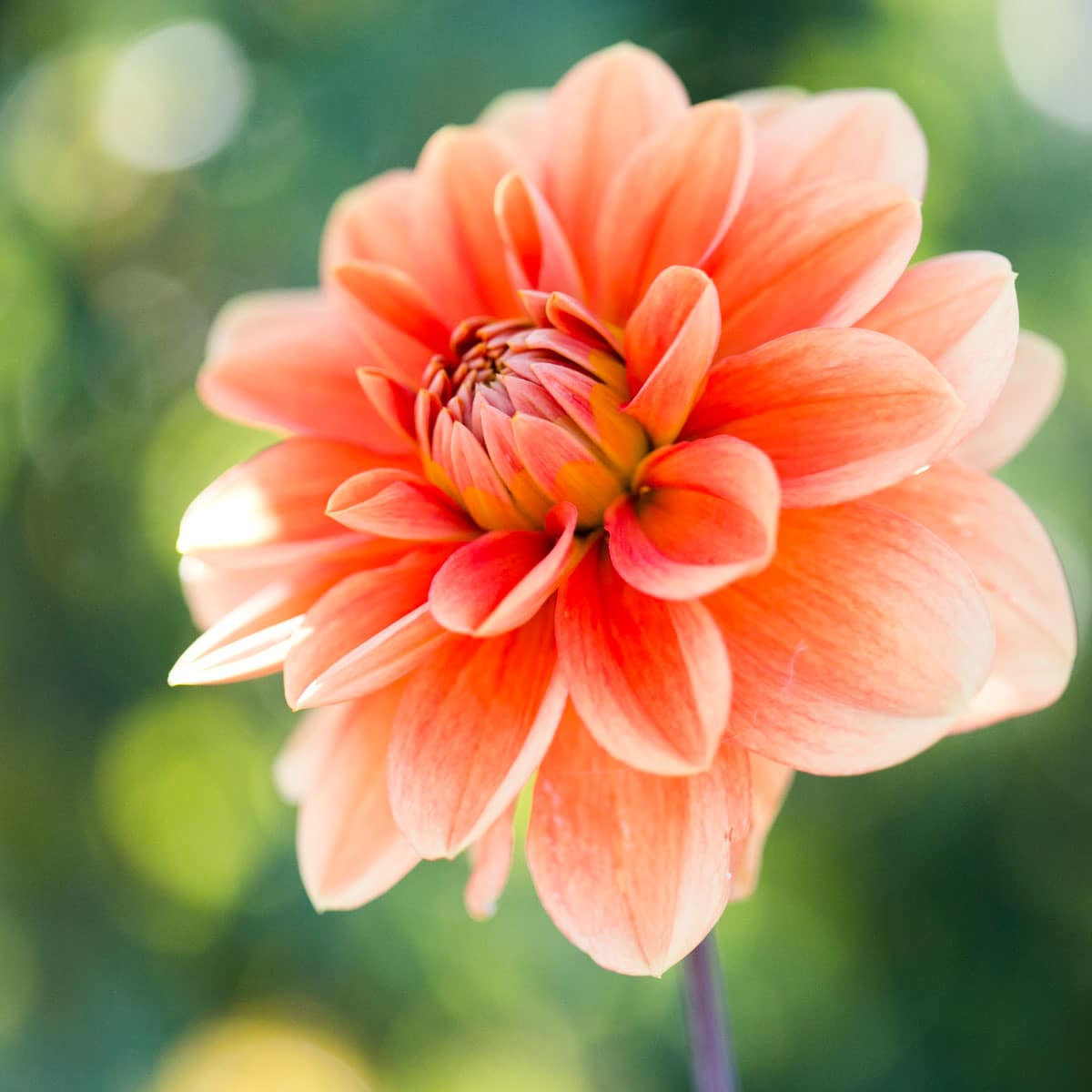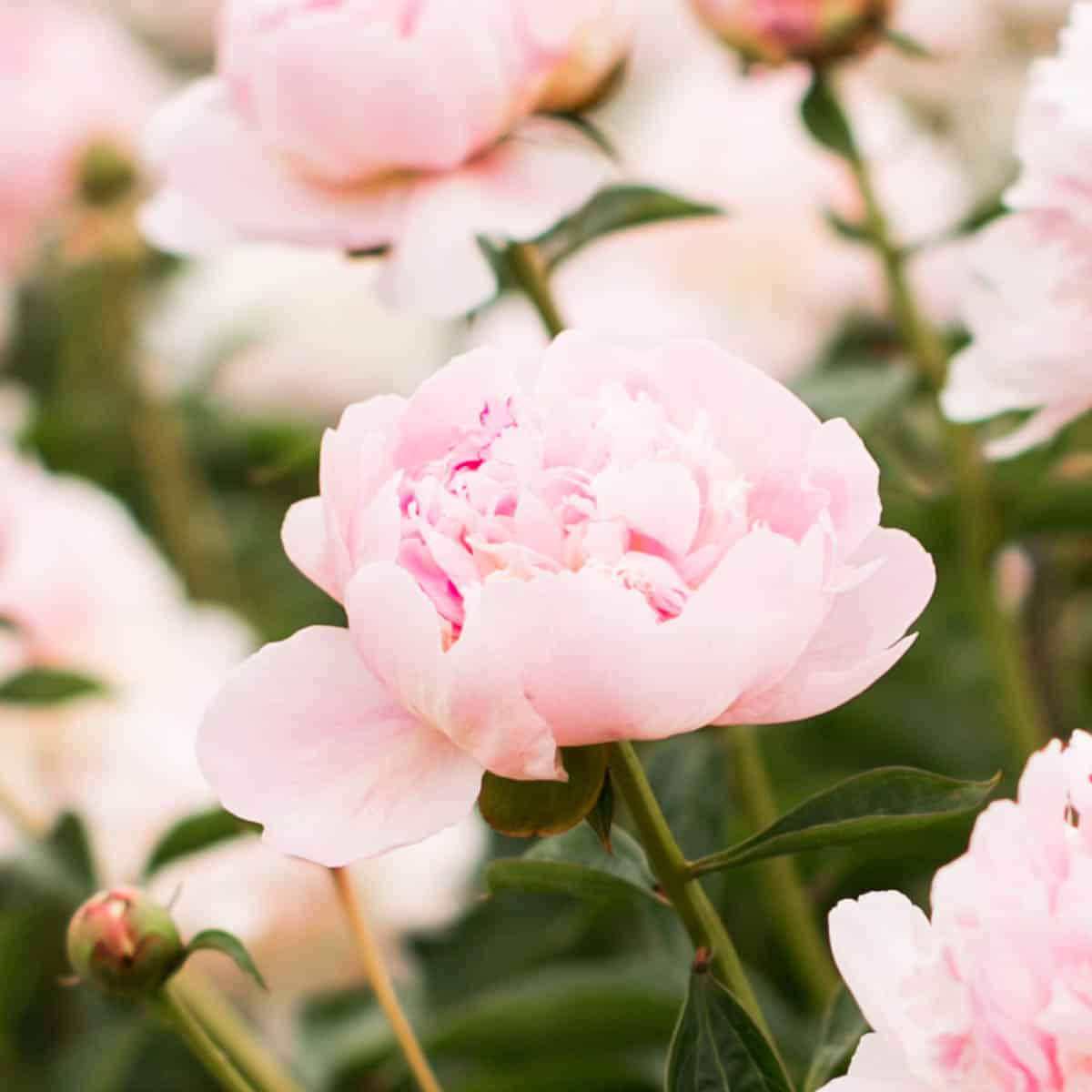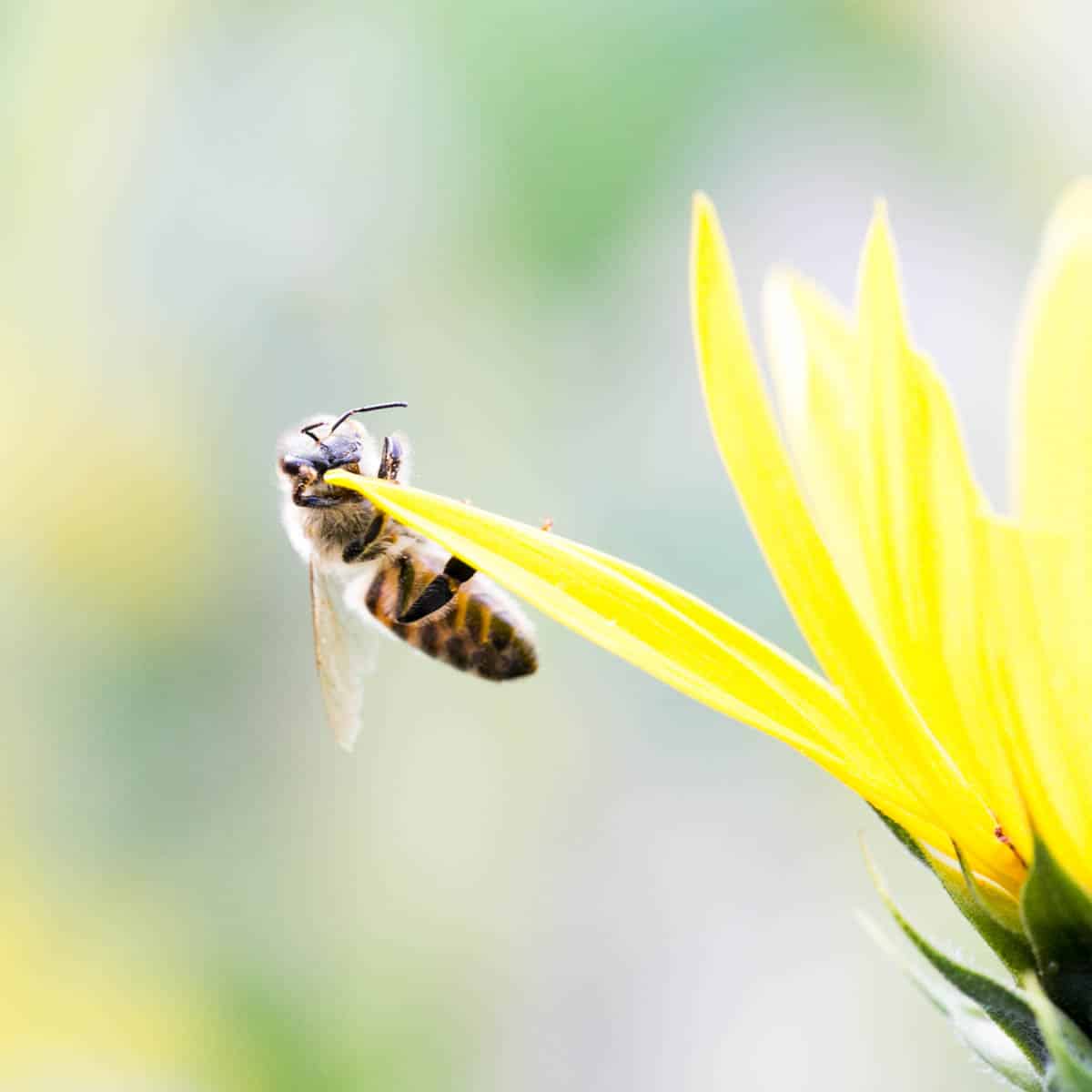14 Easiest Flowers To Grow From Seed
These easy-to-grow flowers from seed are a quick way to bring magic to your garden! With a toss of the hand and a flick of soil, these seeds will bring abundant blooms to your beds- many of them perfect for cut flowers.

Planting flowers from seeds can save you a ton of money. One packet is about $3 – the average price of one flower start!
And planting flowers from seed is a gratifying project that even beginner gardeners can do.
If you start flowers indoors, you can get a head start on the season, and saving seeds for next year will mean you are growing flowers for free!
Here are 14 of the easiest flowers to grow from seeds and a few tips on growing each of these magical bloomers.
Easiest Flowers To Grow From Seed
My children and I have grown all of these flowers at one point or another, and many we grow year after year!
All of these flowers are easy to direct sow – an excellent biology lesson for kids and a rewarding project for any novice or skilled gardener to try their hand at!
Sunflowers

Sunflowers are one of the easiest flowers to grow from seed and will reward you with giant flower heads that you can harvest in the fall for more seeds!
These giant bloomers must have all day sun to thrive. Sunflowers can tolerate most soil conditions, and wild sunflowers can grow in poor soil!
To plant: Sow seeds about 1/4 to 1/2 inch deep and cover loosely with soil. Make sure to pick a sunny spot. The seedlings can be a tasty treat for birds and squirrels – cover them with wire mesh for protection while they develop.
Don’t just go for classic sunflowers; fill up your flower beds with red, orange, or ombre sunflowers!
Dwarf Sunflowers
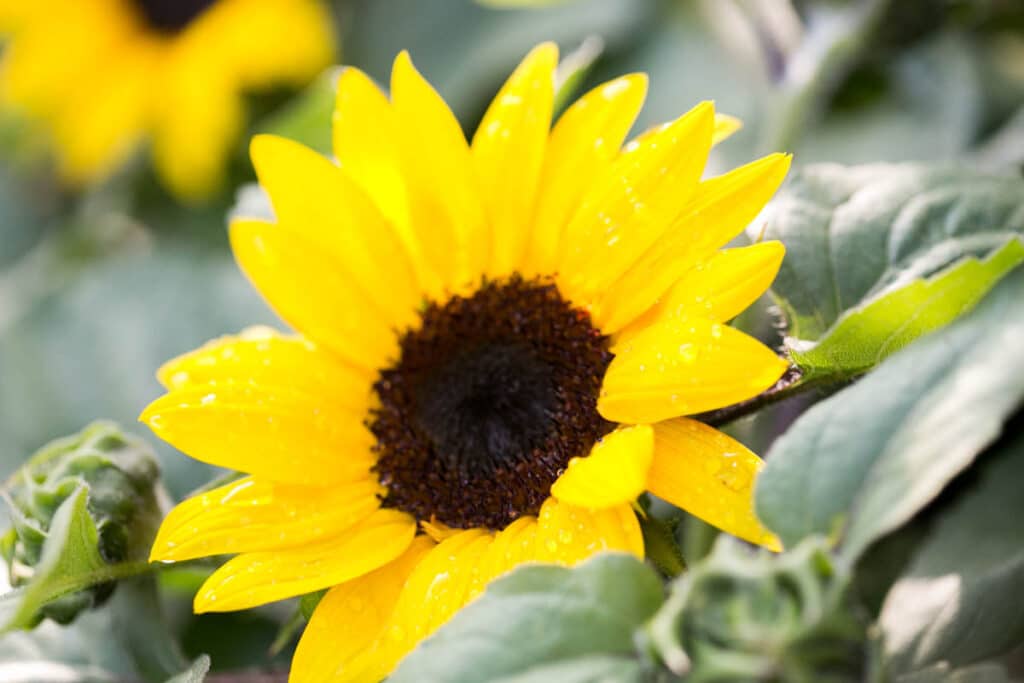
Dwarf sunflowers are the perfect seed to sew in raised beds, containers, and flower beds. These cheerful annuals need lots of sun and make excellent cut flowers. Plant seeds every few weeks in spring, and you’ll have cheerful flower arrangements in bloom from late summer through fall.
To Plant: Plant dwarf sunflower seeds about 1/4 inch deep, giving each plant about 12 inches of space. Seedlings should emerge in about ten days.
Teddy Bear are my favorite dwarf variety!
Cosmos

Cosmos have long, dark seeds that are easy to plant. These flowers thrive in full sun and come with sea-shell-shaped flowers in pink, white, cream, red, and purple hues.
My kiddos and I have planted cosmos flowers at every home we’ve lived in. Deadhead them regularly, and they will pump out blooms up until the first autumn frosts. Cosmos thrive in heat and are drought tolerant once established.
To Plant: Lightly sow seeds about 1/4 inch, cover with a fine layer of soil, and space your plants 18 inches apart.
Zinnias
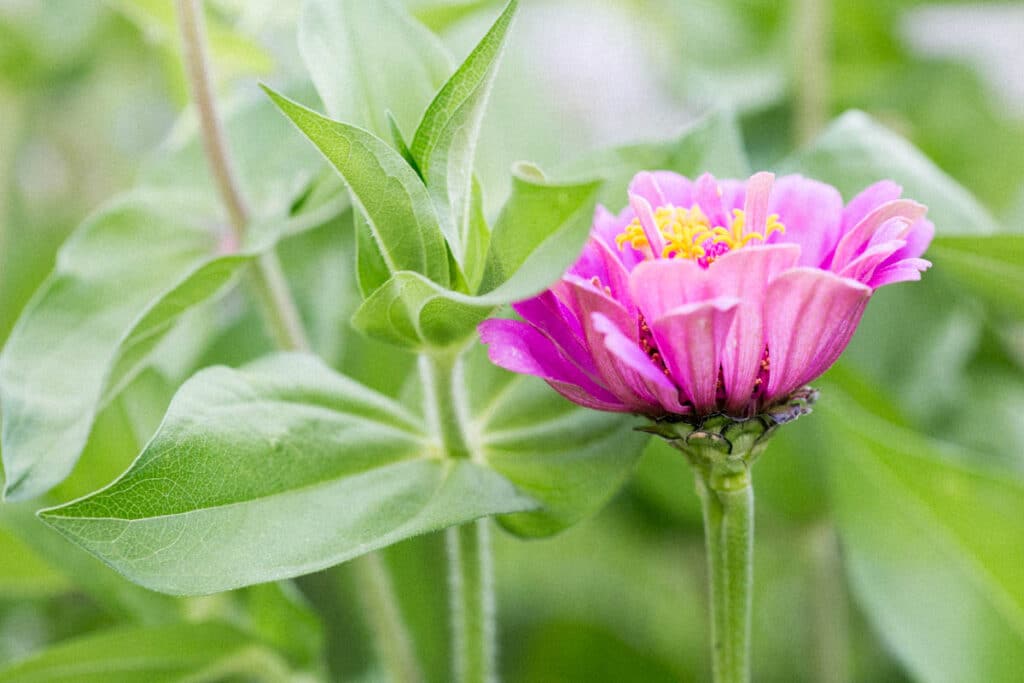
Growing zinnias from seed is a tradition in our household. They make a long lasting cut flower, and the plants offer bloom after bloom when deadheaded.
You can quickly harvest the zinnia seed pods and save the seeds for next year.
Zinnia flowers are available in dwarf and giant varieties. Smaller varieties are a great addition to pots and containers; larger varieties will light up your flower beds and vegetable garden. (Pollinators LOVE them!)
How To Plant: After all the danger of frost, directly sew the flower seeds just 1/4 of an inch deep, then cover them with a light layer of soil. Space the seeds according to the plant size- larger varieties will need more space.
Bachelor’s Buttons

These charming flowers feature fringed flower heads in shades of purple, pink, blue, and white. Bachelor’s Buttons will bloom from early summer through autumn. They reseed easily if the flower heads are left in place, making them the perfect choice for a wildflower garden.
How To Plant: Plant Bachelor’s Buttons in a sunny location with loose, fertile soil. Cover the seed just 1/4 inch deep and 12-18 inches apart.
Marigolds

Marigolds are quick and easy to grow from seeds and offer vibrant beauty all summer. Available in golden hues of orange, yellow, and red, the scent of marigolds repels pests, making them a perfect addition to the garden beds.
These light-loving plants need at least 6-8 hours of sunshine daily.
How To Plant: Marigold seeds can be directly planted into the ground after your last frost or started from indoors eight weeks prior to the last frost date. The large seeds are easy to sew- plant them about 1/8 inch deep and cover them with loose soil.
Learn how to deadhead marigolds for lots more blooms here.
Calendula

Also known as pot marigold, calendula is a reliable bloomer that brings sun-toned flowers to the garden beds. These hardy annuals come in yellow, orange, peach, white, and bi-colored tones.
They are straightforward to grow from seed and offer blooms all summer long.
Calendula do best in spring and fall- the hot sun can cause them to overheat. So plant them in a spot with morning sun and partial shade in the afternoon. Keep the soil moist but not soggy.
How To Plant: Sew the seeds 1/4″ deep and thin the seedlings 8-12 inches apart. Encourage regular blooming by deadheading spent calendula flowers.
Nasturtiums
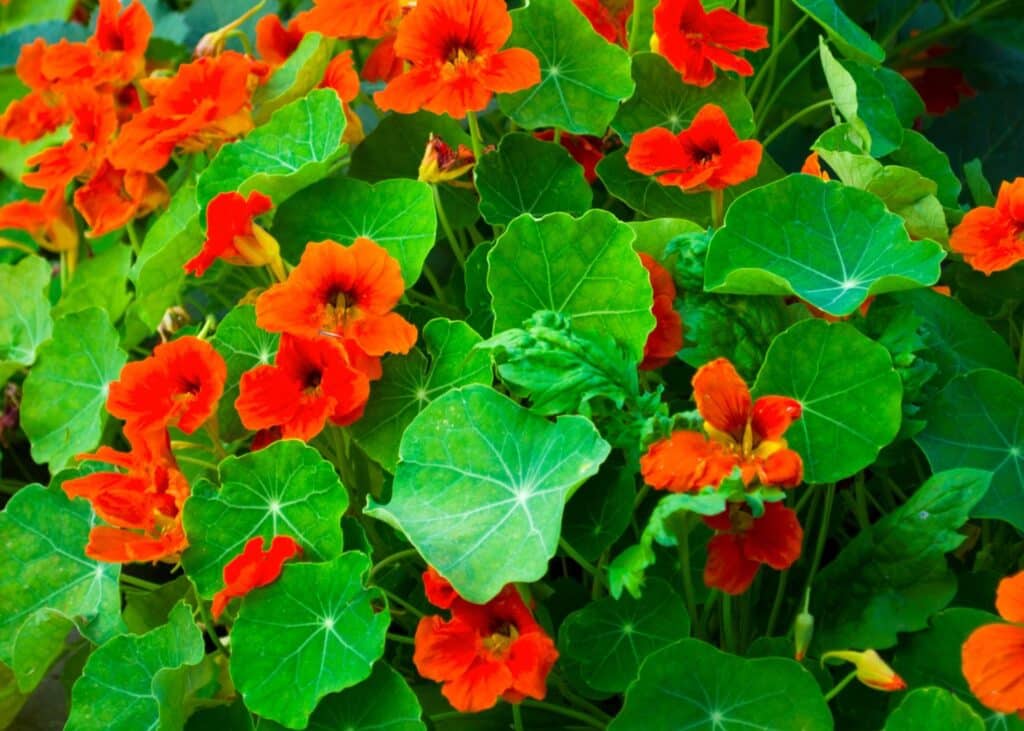
Nasturtiums brighten up summer with their beautiful jewel-toned flowers. These bold blooms are easy to grow and edible, offering a peppery taste for summer salad.
These charming flowers are perfect for a cottage styled aesthetic. They crave moist soil with excellent drainage, and the flowers will dry up if not watered regularly.
How To Plant: Nasturtiums have large, round seeds that are very easy to plant but need moist soil to thrive. Soak the seeds for 24 hours before planting, then cover with a loose layer of soil.
Shasta Daisies

Shasta daisies are perennial flowers that are easy to grow from seed. These striking flowers feature white petals with vibrant yellow centers that pollinators love. Once established, they are drought tolerant and very low-maintenance.
These perennials can be started indoors 6-8 weeks before planting. Harden the seedlings off once they are a few inches high by placing them outside for an hour or two a day.
Once they have adjusted, plant them in a sunny location with rich, well-draining soil.
Shasta Daisies also make excellent cut flowers!
Clarkia
Clarkia is a whimsical flower that is incredibly easy to grow from seed. I grew these annuals several years ago in honor of my son, Clark!
A lesser-known flower, Clarkia comes in various bright colors: coral, pink, purple, and white.
How To Plant: Direct sew seeds straight into the soil once frost has passed. Give them a sunny location and soil with great drainage.
Sweet Peas

Featuring large seeds that are easy to plant, Sweet Peas offer beautiful flowers in pastel shades of pink, blue, red, lavender, and white. These early bloomers thrive in cool temperatures and can handle light frosts. They need to be sown in late winter to early spring in most climates.
How To Plant: Get a head start on sweet peas by planting them by seed indoors early in the season, about 6-7 weeks prior to the last frost. Plant your starts in fertile, nutrient dense soil.
California Poppies

Offering an early spring bloom time, California Poppies bring vibrant orange flowers and gorgeous ferny foliage.
These short-lived perennials can be planted by seed by simply scattering the seeds in fall or early spring. Give them a spot in full sun with well-draining, sandy soil (they make a great companion plant for lavender).
These low-maintenance flowers attract bees and butterflies, making them a perfect addition to a pollinator garden.
Black-Eyed Susan

Also known as Rudbekia, Black-Eyed Susans are native to the United States. They are easy to grow from seed and feature long-lasting flowers with bright yellow petals and black centers.
These drought-tolerant flowers love sun and need 6-8 hours of light to thrive. Beneficial insects like bees, butterflies, and ladybugs will flock to these bright flowers.
How To Plant: Start seeds indoors during spring, and give them a bright grow light for germination. Plant them in fertile soil that has good drainage.
Wildflower Seeds

Wildflower seed mixes feature easy seed plants like cosmos, nasturtium, daisies and even unique growers like lupine! These mixes are full of colorful blooms and are very easy to seed- just prepare your soil then broadcast the seeds.
These seed mixes are a great choice if you have a large area that you want to see blooming with different flower varieties. Just keep in mind that not all flower seeds will sprout.

Tips For Planting Flowers From Seed
Despite our best efforts, sometimes seeds fail to germinate and produce flowers. Here are a few tips to help ensure your seed sewing results in a beautiful flower garden:
- Make sure to follow the instructions on the back of seed packets closely.
- Give your plants enough space! When I first started designing a cutting garden, I often planted my seeds too close together. Be sure to thin the plants and give each one appropriate room to grow and thrive.
- When watering seedlings, use a very gently stream of water so as not to disrupt the soil and roots.
- Ensure all of the risk of frost is gone before planting frost-sensitive flowers.
- Soil matters! Most flowers enjoy fertile, well-drained soil, but some, like cosmos, thrive in poor soil.
- Young plants may need to be protected from squirrels and birds.

Flower gardening doesn’t have to be complicated, and I hope this list of easy-grow flowers has encouraged you to start some of your own flowers from seed this spring!
With some care and planning, you can easily have a bounty of flowers blooming in your own cut-flower garden.
As always, please feel free to leave any comments or questions below. I read and respond to everyone. Let me know how I can help you- and happy planting!!

